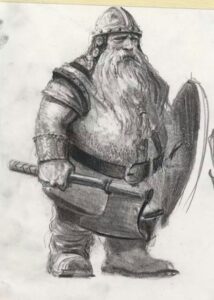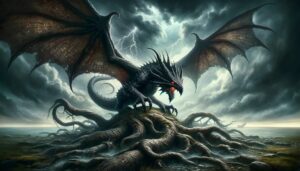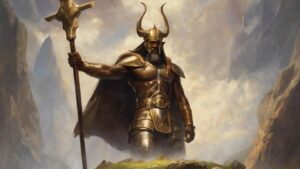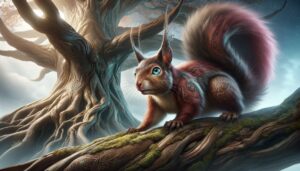Table of Contents
Who is Dwarf?
A dwarf is a mythical being that appears in various mythologies and folklore around the world. While their characteristics can vary across cultures, some common features are associated with dwarves. Here’s a general overview:
Appearance

Dwarves, portrayed as mythical beings in various cultures and mythologies, are characterized by distinctive features. Typically, they have a stout and robust stature, standing shorter than humans. Their physical appearance includes strong builds and a robust frame. Dwarves commonly sport beards, underscoring their maturity and wisdom. They typically don durable, practical clothing suitable for mining and crafting. Their faces may exhibit weathered expressions, reflecting their resilience and experience. Transitioning from one cultural depiction to another, the visual representation of dwarves varies across mythological traditions and fictional works, showcasing the flexibility of this mythical archetype.
Habitat
Dwarves inhabit underground realms, choosing caves, mines, or subterranean spaces for their homes. Transitioning from the surface to these hidden domains, they carve out intricate dwellings within the earth. These underground habitats provide both shelter and a conducive environment for their mining and crafting activities. Dwarves actively create and maintain these subterranean realms, shaping their living spaces to suit their needs.
Personality:
Dwarves exhibit distinct personalities, characterized by traits such as resilience, craftsmanship, and loyalty. Transitioning from one aspect to another, their resilience is evident in their ability to endure challenging conditions, both above and below ground. Actively engaged in mining and crafting, dwarves showcase their exceptional skills in metalwork and construction. Loyalty is a defining feature of their personalities, with a strong sense of community and commitment to their kin. These traits collectively contribute to the unique and dynamic personalities attributed to dwarves in various cultural traditions and fictional portrayals.
Cultural Depictions:
Norse Mythology: In Norse mythology, dwarves (or Dvergar) are skilled blacksmiths who crafted powerful weapons and artifacts for the gods.
Germanic Folklore: Dwarves are prevalent in Germanic folklore, often associated with mining and treasure hoarding.
Dwarves creations
Dwarves in various mythologies are renowned for their exceptional craftsmanship and have created numerous legendary objects. Some of the notable creations attributed to dwarves include:
Mjölnir: Thor’s hammer in Norse mythology, forged by dwarves Brokkr and Sindri.
Gleipnir: The unbreakable chain used to bind the wolf Fenrir in Norse mythology, also crafted by Brokkr and Sindri.
Draupnir: A magical golden ring that produces more rings every ninth night, also created by Brokkr and Sindri.
Skidbladnir: A self-folding ship with the best winds, another creation of Brokkr and Sindri in Norse mythology.
Sif’s Golden Hair: A set of golden hair for the goddess Sif, also made by dwarves in Norse mythology.
Excalibur: King Arthur’s legendary sword, often attributed to being forged by dwarves.
Sampo: A mystical artifact in Finnish mythology, created by Ilmarinen, a mythological blacksmith.
Clarent: Another sword associated with King Arthur, sometimes believed to be forged by dwarves.
Gungnir: Odin’s magical spear in Norse mythology, created by dwarves.
Tyrfing: A cursed sword in Norse mythology, made by the dwarves Dvalinn and Durin.
Dwarves in various mythologies are said to have crafted numerous remarkable objects, each possessing unique powers and significance.
Literary Influence:
Cultural Impact:





